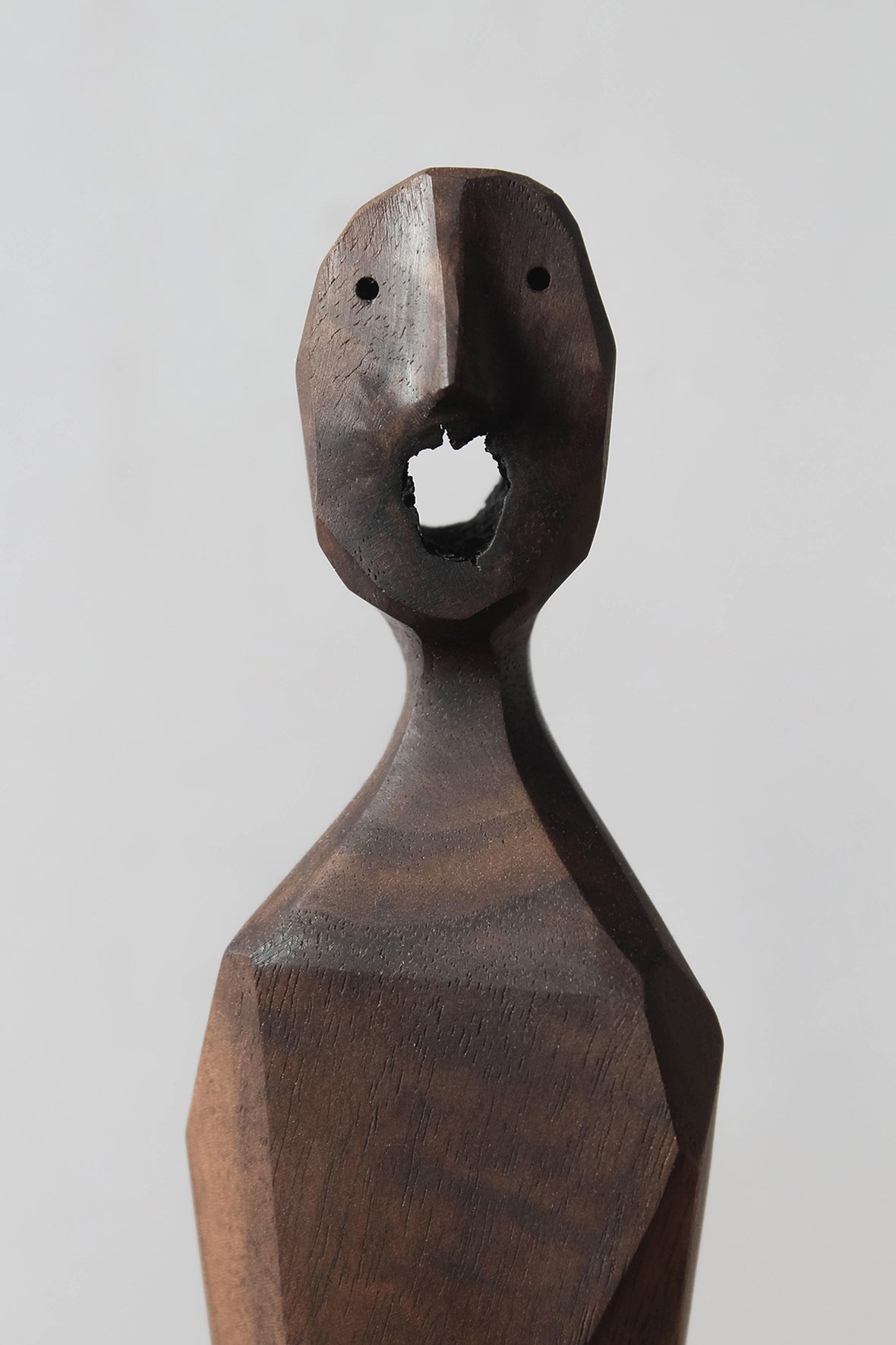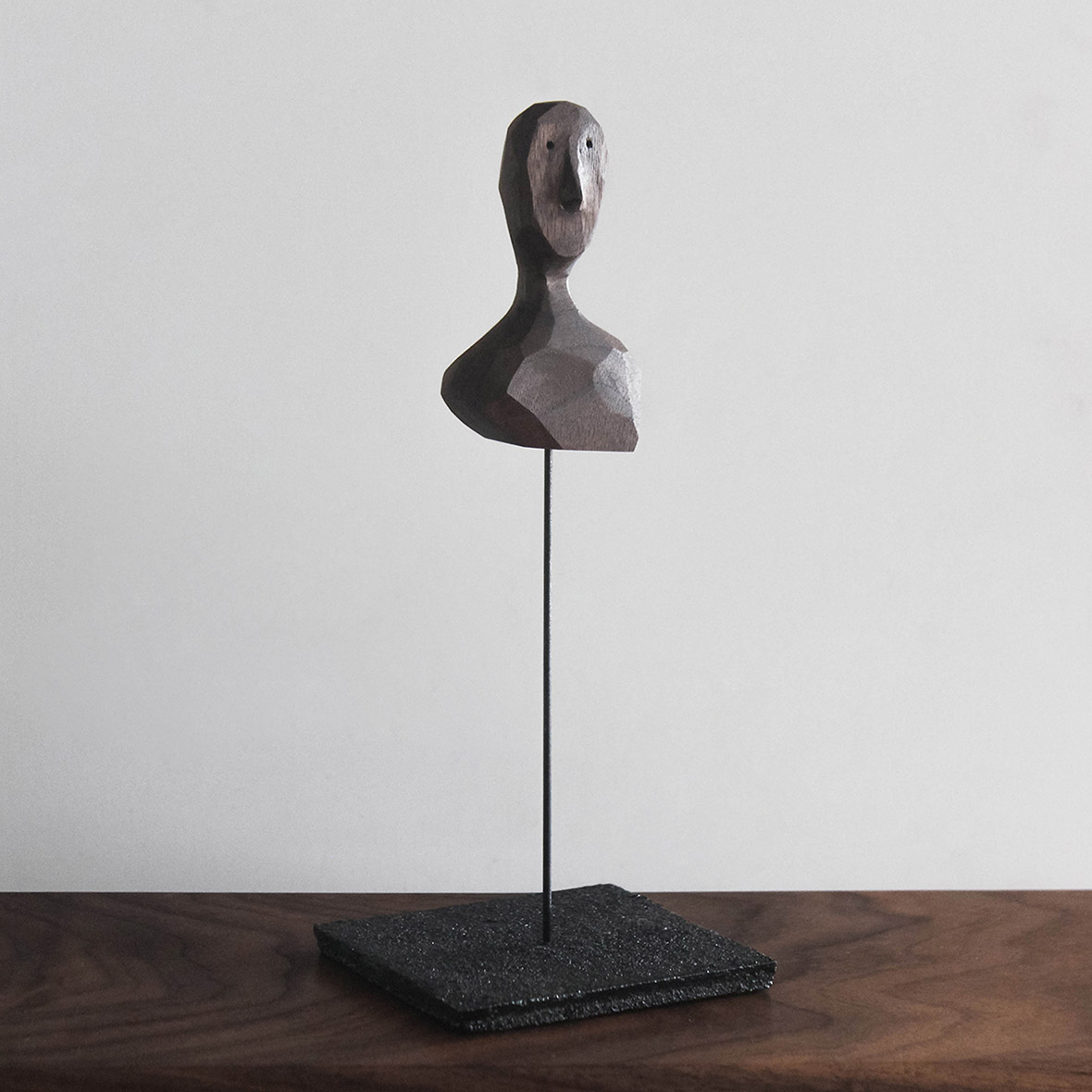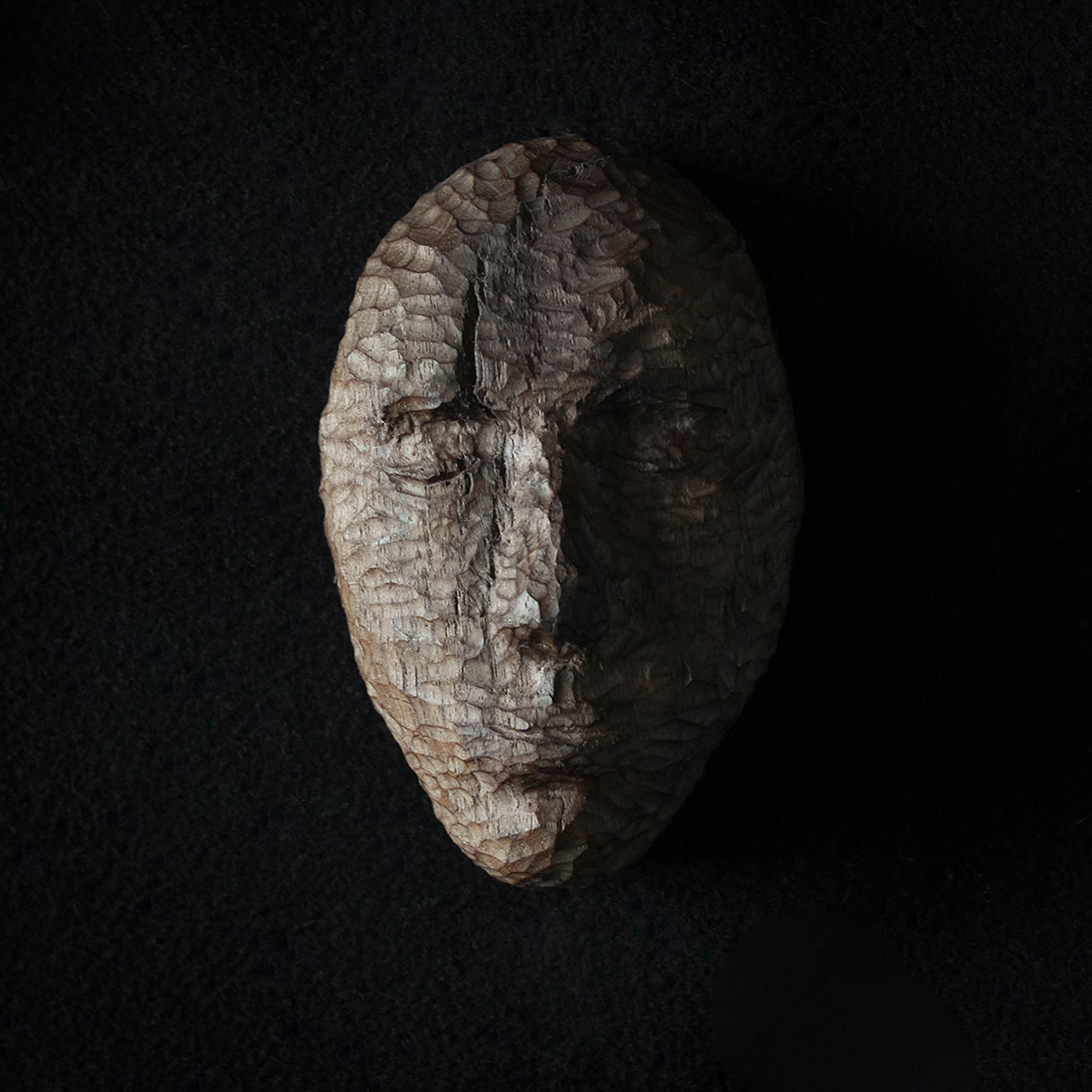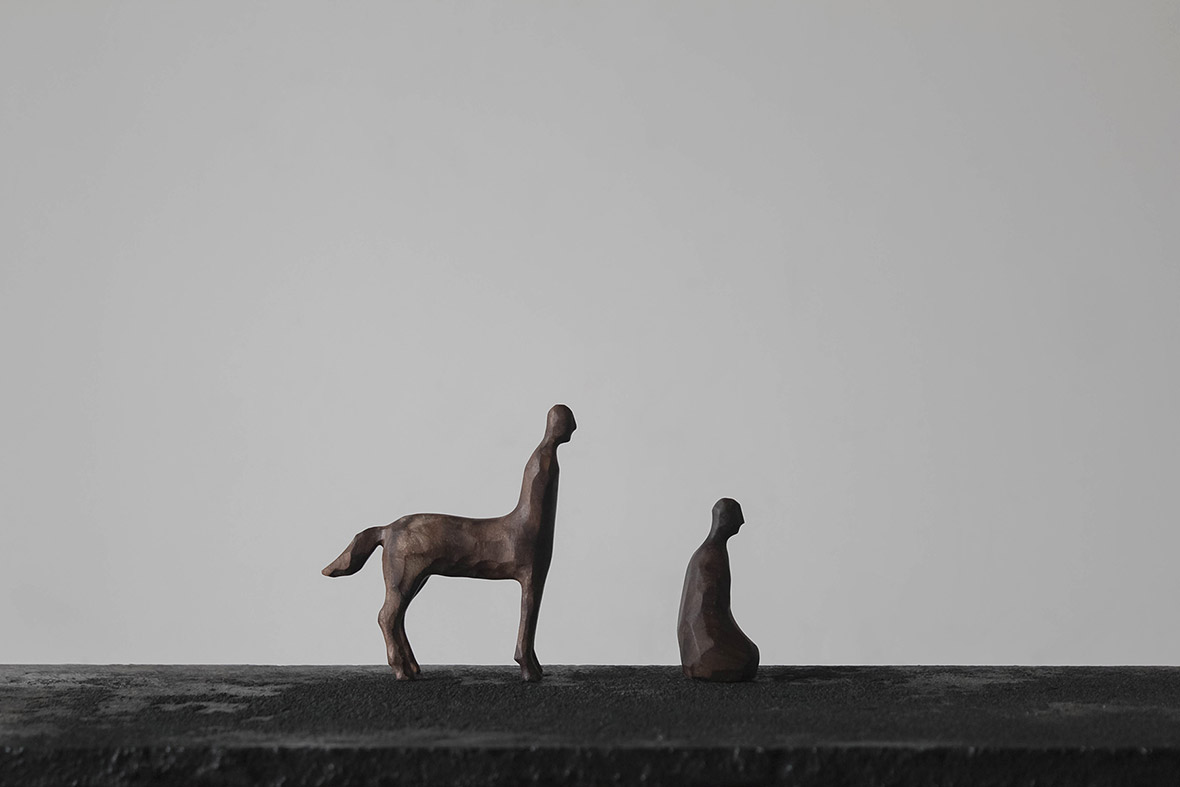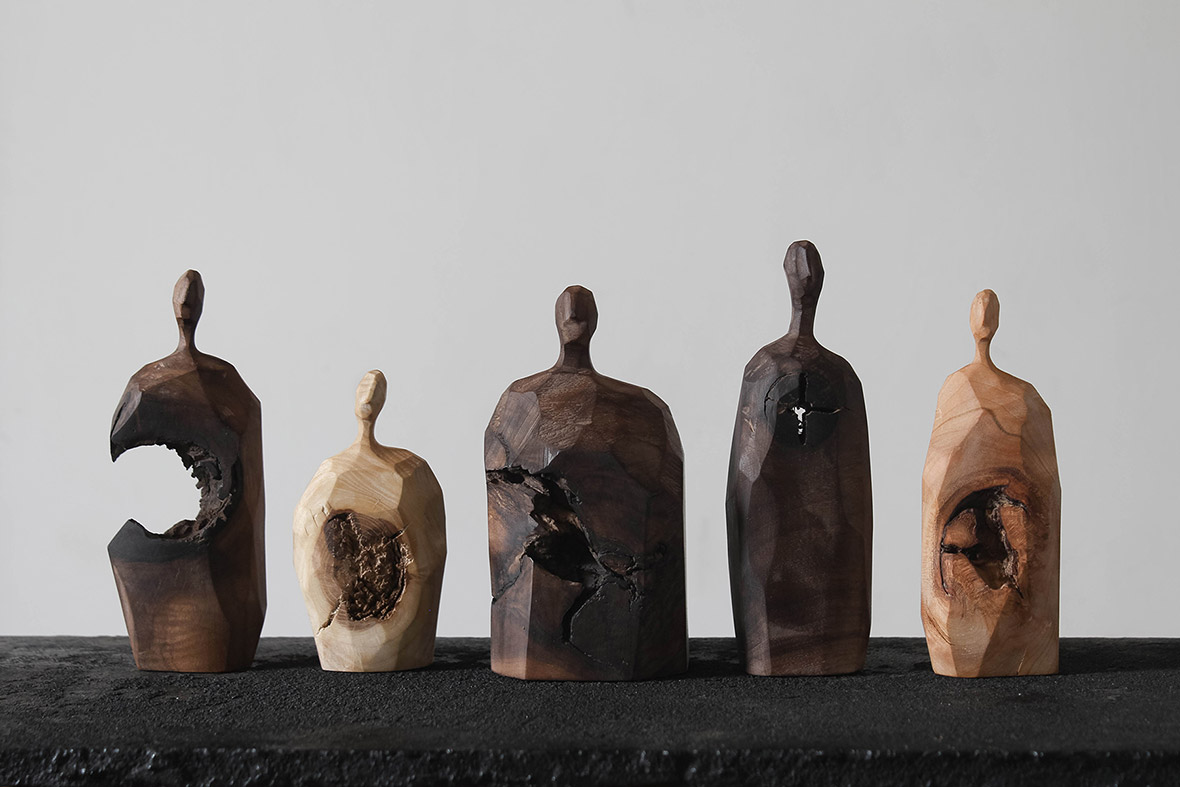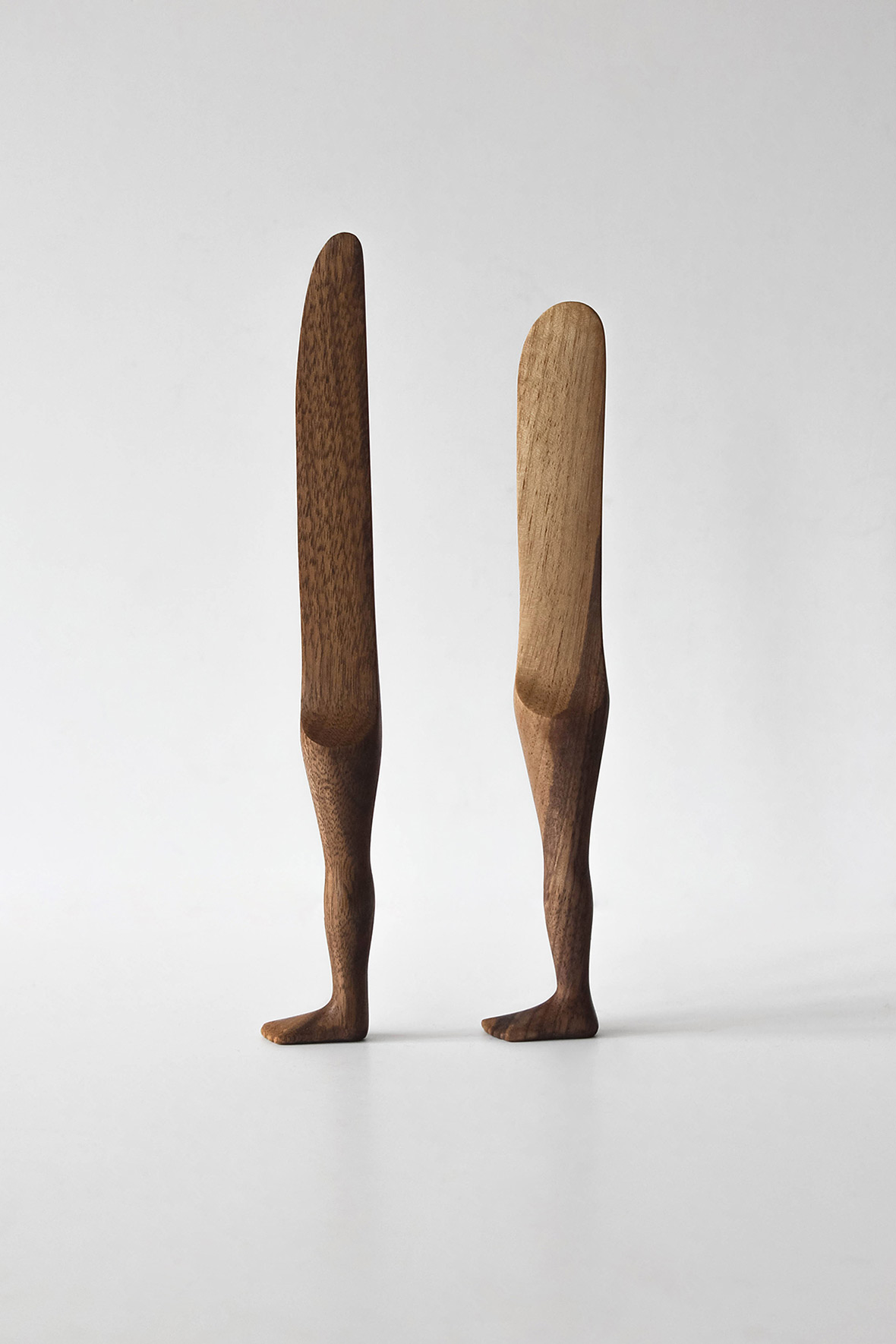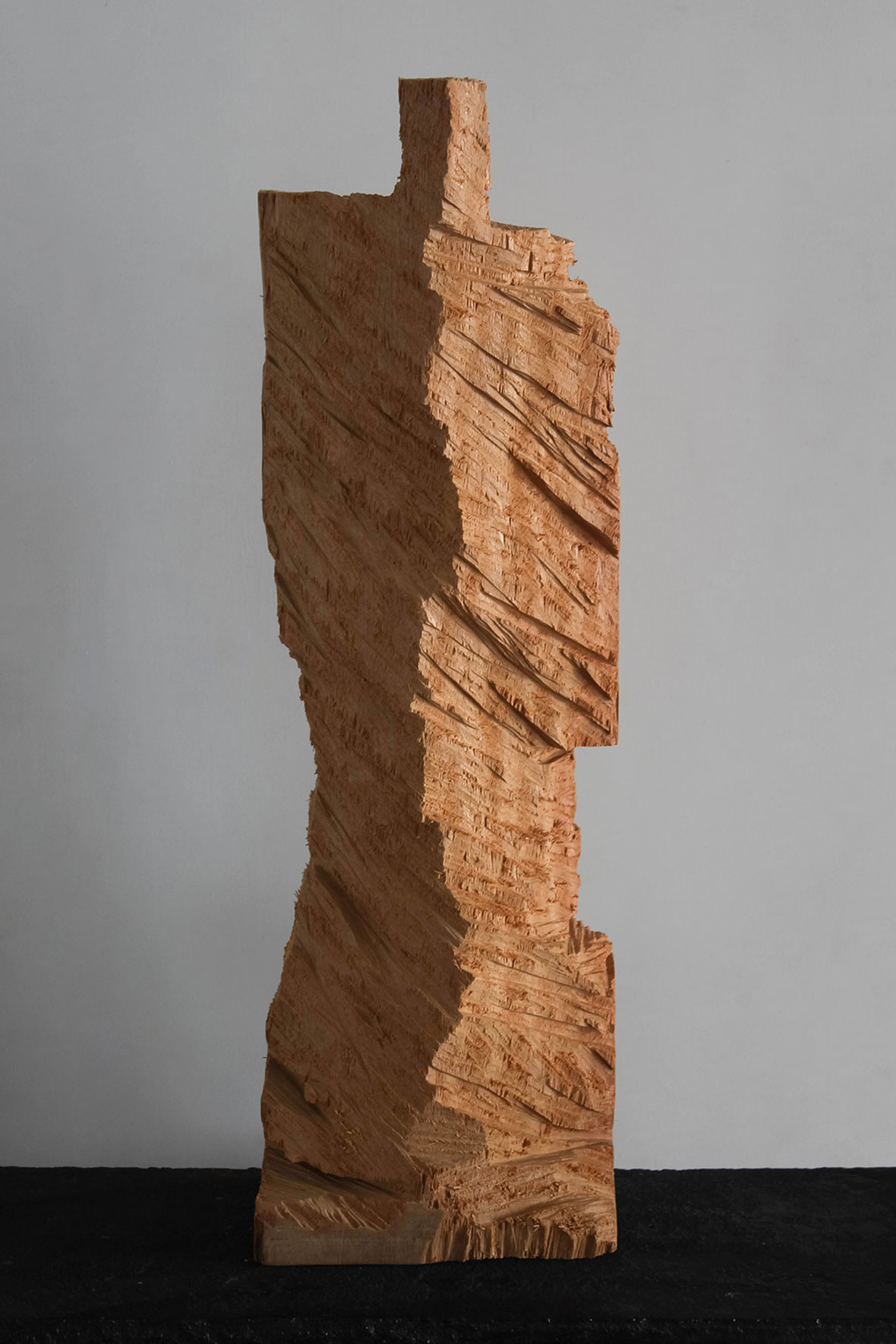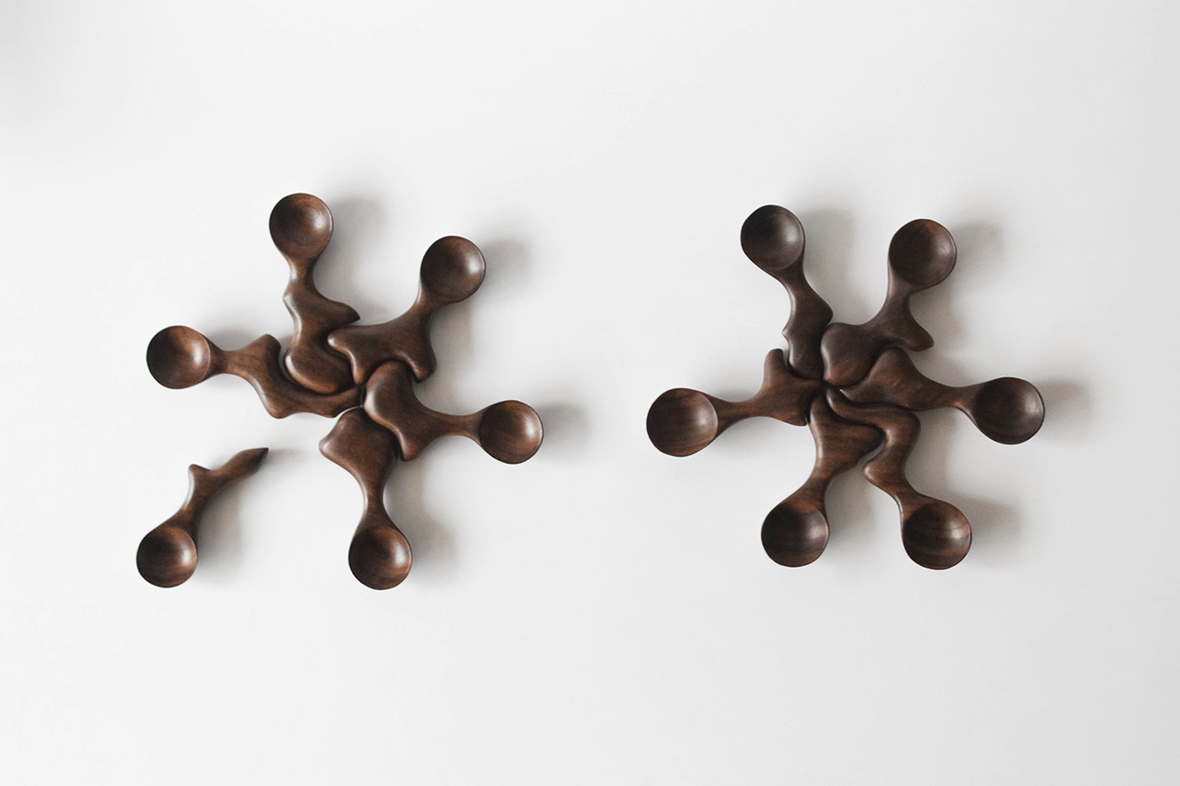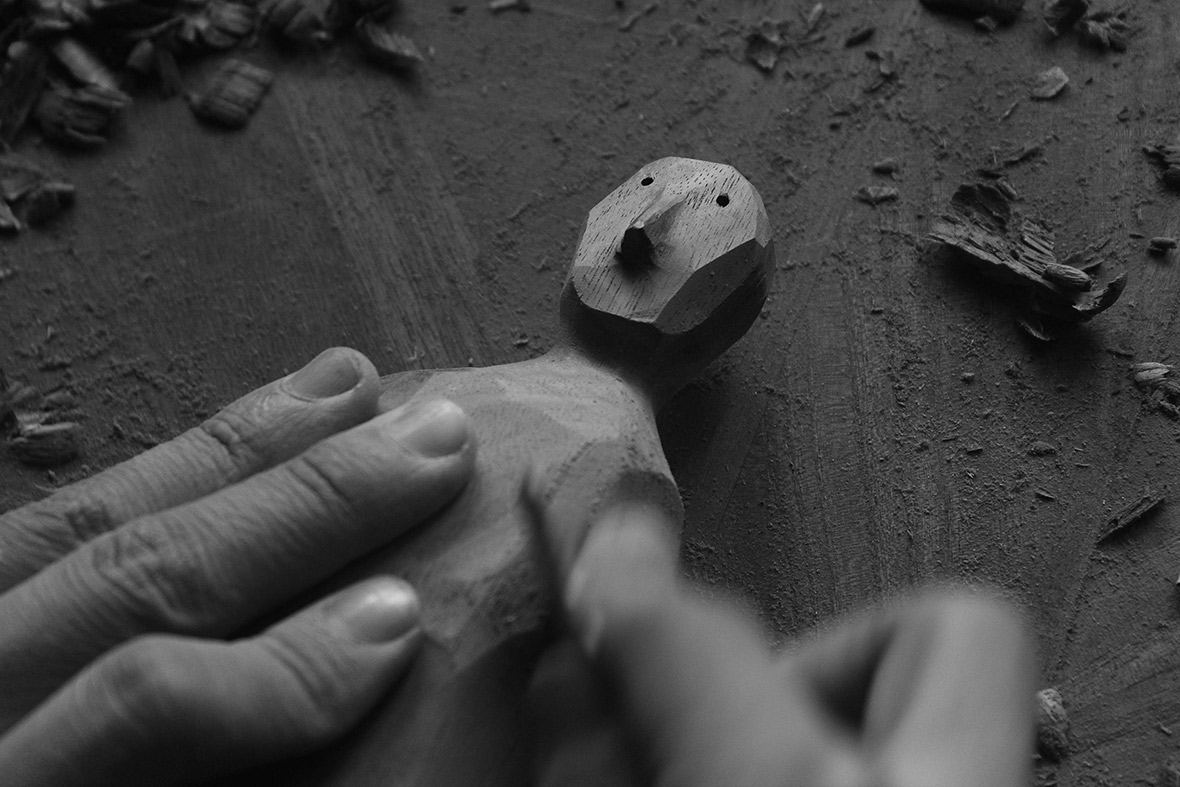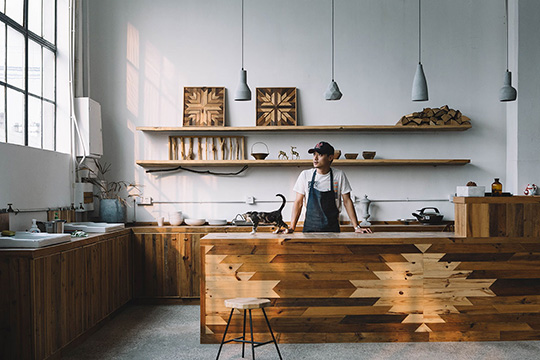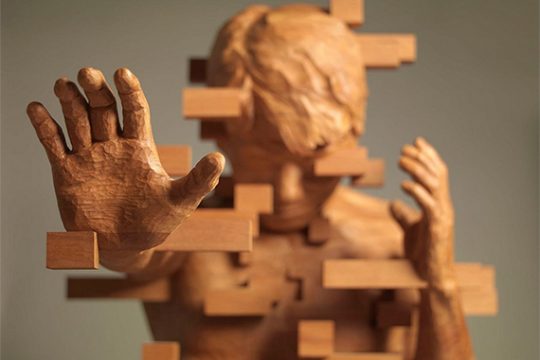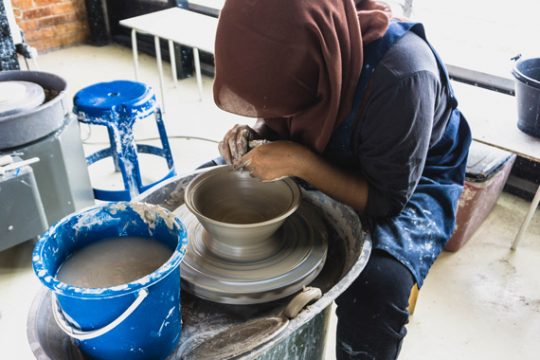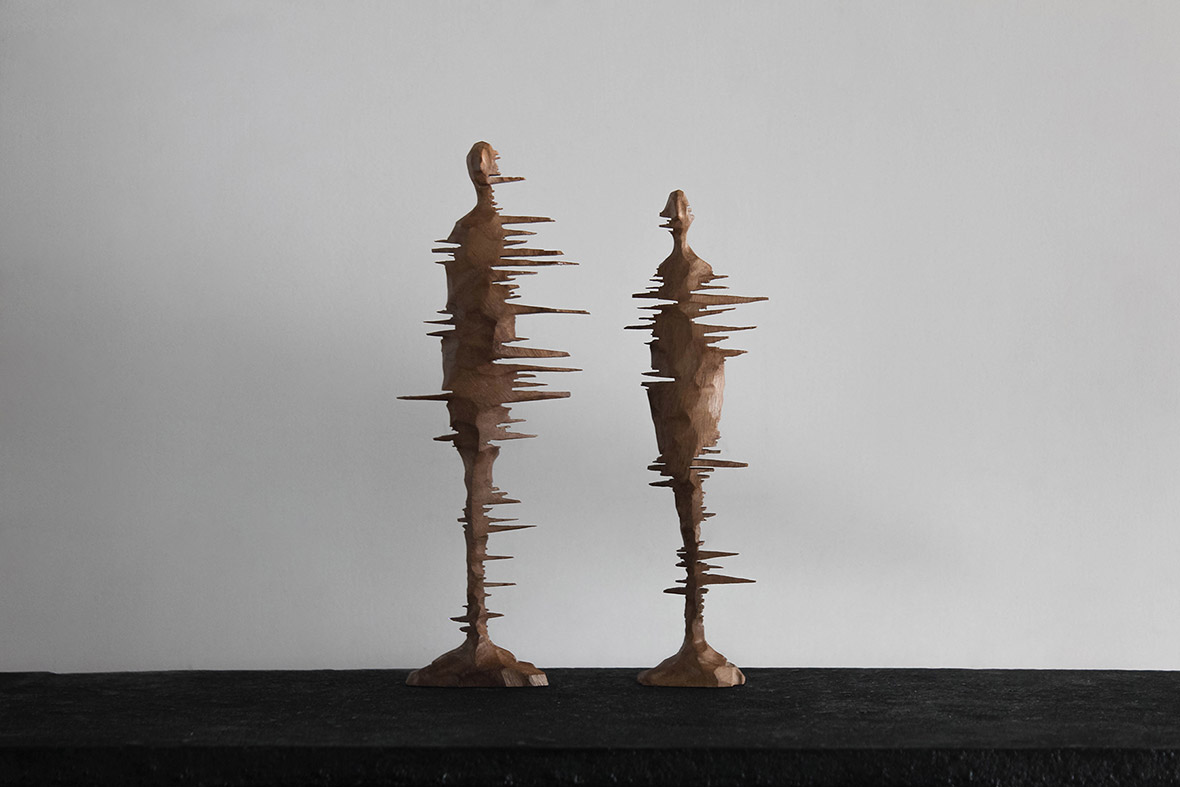
Meet Mao Guan Shuai, a Chinese artist who’s able to integrate the imperfections of wood as a central part of his stunning sculptures. Born in Ningbo, Zhejiang, this skilled artisan now works under the moniker Guaishou (aka Monster). “The soul and essence of a tree can be found in all its imperfections,” he says. The gaping mouth of a figure seemingly frozen in an endless scream, and a series of human forms with damaged physiques – these are just some of the ways he’s reimagined what might be viewed as flawed material by others. Through a meticulous process of cutting, chiseling, chainsawing, sandpapering, and carving, Guaishou liberates these lifelike figures that have been hiding in these blocks of wood all along. His fascination with woodworking led to him starting his personal studio Guaishou Muji in 2013. In the beginning, he was only creating simple and practical products such as spoons and plates, but over time, his creations eventually evolved into the wildly creative and innovative works of art that he is known for today. Neocha recently had the chance to talk to Guaishou about his creative process and his growth as an artist.
“树的结疤更像是树的灵魂。”他说。于是这些结疤在他手里,成了一个人在呐喊的口,成了一个人千疮百孔的躯体……削、凿、电锯切割、砂纸戳刀打磨,他对作品的处理方式从来不拘一格。他符号化的作品中充满了木头重新绽放的生命力。他是木作工作室“怪兽木记”的创立人——怪兽。怪兽本名毛冠帅,浙江宁波人,环境与艺术专业出身,自学木作。2013年工作室成立时,怪兽仅年方四五。从最初制作勺子盘子摆饰等小器物,到雕塑等艺术类木作创作,我们与怪兽谈了谈他的创作和其成长过程。
Neocha: How did you become interested in woodworking?
Guaishou: I first encountered woodworking during the junior year of college. I later found myself once taking notice at how the furniture looked in a restaurant; they were old, simple, and rather quaint. I thought to myself: “Wouldn’t it be great if I made my own furniture one day?” That’s how it all began. Of course, you can’t just make a piece of furniture right away as an amateur woodworker. I first started with simple things like spoons and plates. I referenced woodworking tutorials and guides online, bought some basic tools, and just started working towards figuring it all out. I’m really particular about how the wood is treated. It’s a big part of how it is presented to people. So I’ll take many steps to ensure that it’s done just right. But of course, there are only so many ways of finishing wood. I suppose this was one of the reasons that I started doing woodwork – because it’s rather simple. It’s unlike other crafts such as pottery that involves more complicated processes. For woodworking, you just need a little motivation and your own two hands.
Neocha: 你最初是怎么进入木作这个领域的呢?
怪兽: 我大学三年级时第一次做木头,之前完全没接触过。有次去餐厅,注意到里面的家具很古朴很好看。我当时就想,如果自己有一天可以做家具也很好。当然,一开始就做家具也不可能,所以就从勺子、盘子之类的开始。我参考网络上的制作教程,买了很简单的工具,就开始纯手工制作、摸索。我很注重作品的表面处理,因为这也是最终呈现给大家的,所以会用很多不同的处理方式。但做木头终归也就是这些手法,这也是我做木头的一个原因,就是它比较简单,不像陶瓷等还需要烧制,只要有点动手能力你就可以去做。
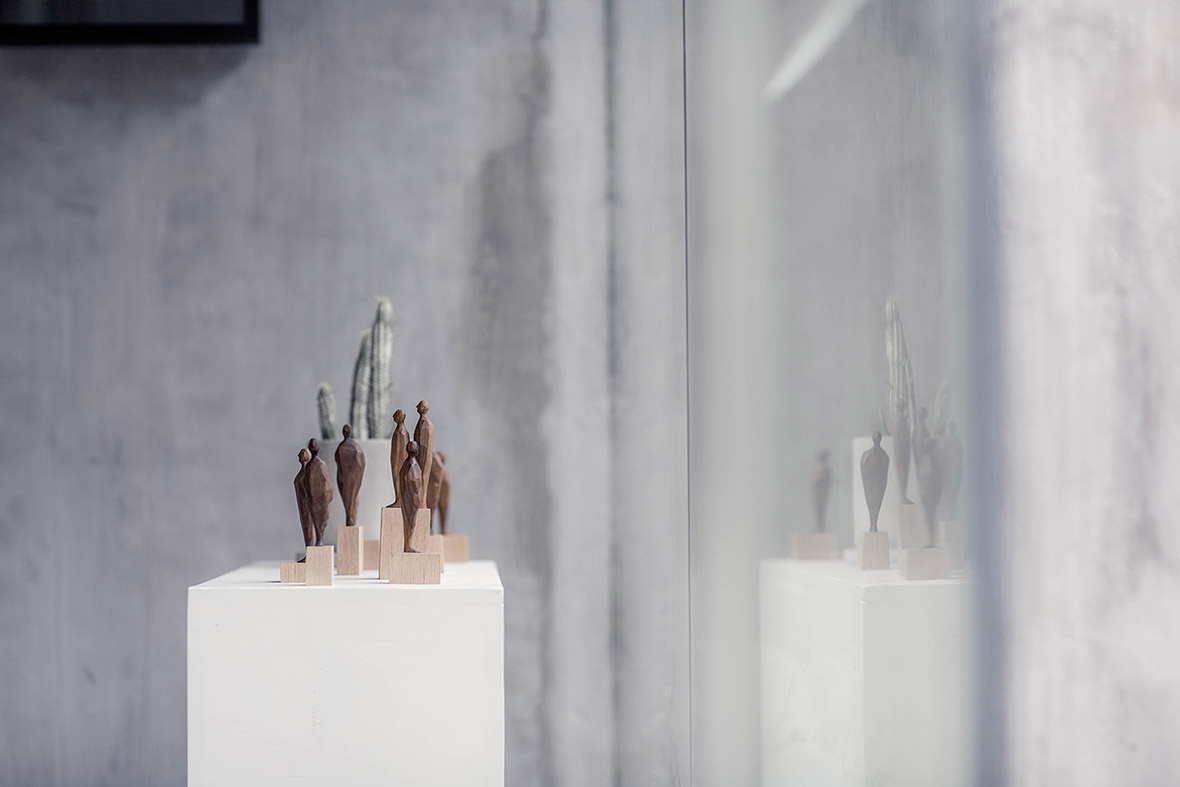
Neocha: In the beginning, you wanted to create things that had practical uses – but now your vision has shifted towards favoring creativity over practicality. What were your creative outlets prior to this?
Guaishou: I used to love photography and illustration. Photography is my favorite, but I’ve been interested in illustration since I was a little kid. It’s funny how making wooden spoons led me to discover a new means of creative expression. I am still making spoons, but I’m making artwork like sculptures as well. Maybe it’s because there are so many people making practical things that it has made me want to do something different. I suppose I’m just following my heart. I’m the kind of person that does whatever pops into my head, and I feel like that spontaneity translates into my style.
Neocha: 从最初想做实用家具,到后来发现自己更倾向于创作。这种创作欲的来源是什么?在这之前你的创作方式是什么?
怪兽: 之前我很喜欢摄影和画画。摄影是我的最爱,画画则是从小就开始的。做勺子把我带到现在这条路上,让我发现新的创作语言。我依然在做勺子,但是做勺子的同时也可以做艺术化的雕塑啊!可能是因为做勺子的人多, 所以我想做点不一样的东西。也可能只是我在追随自己的内心。因为我就是想到什么就去做,然后逐渐形成自己的风格。
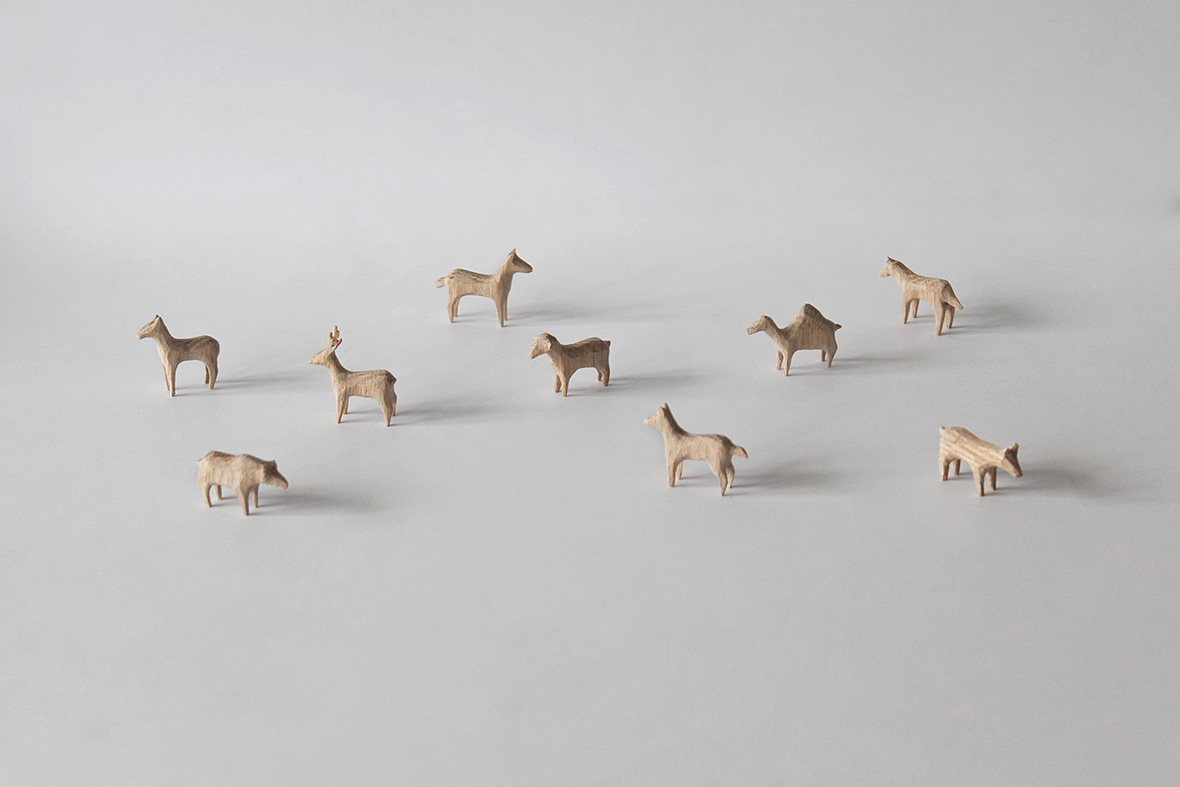
Neocha: You mentioned that it sometimes takes many unsuccessful attempts before you can complete a piece of work. Is this common for your work?
Guaishou: Not always. When I first started carving sculptures the initial attempt would often be a failure or end up being something I’m not proud of. Once I’ve done it a few times, the later productions will be error-free. But whenever I start on a new series of work, I’ll face a new set of problems. So before I even begin any actual physical work, I first form a clear concept and draft a rough sketch. If it is something I’m really interested in creating, I’ll make it happen no matter what. If I don’t succeed the first time, I’ll try again and again. For me, the ability to turn my ideas into something tangible is the most fascinating thing about my creative process. I really enjoy the creation process. I often take a little time to admire and appreciate the finalized work before moving on and fully devoting myself into the next project.
Neocha: 你提到有些作品做几次才做成,这在你的创作中是一种常态吗?
怪兽: 不完全是。比如有些人像雕塑,我刚开始做的时候,会经历第一遍做坏掉,或者不满意的情况。同一类型的作品到后面一般不会出差错了。然而创作一个新系列时,又会有不同的问题出现。基本上,在制作之前,我会先构思好,画出设计手稿。只要是我想做的东西,我都会把它做出来,一遍不行就两遍。把脑中的设想变成现实的时候,对我来说就是创作过程中最有意思的事。我很享受创作的过程。一个作品实现的时候,去欣赏去看,然后再投入到下一个创作中去。
Neocha: What do you consider to be your three favorite pieces of work thus far?
Guaishou: One of my favorites is the sculpture of a peeing dog. When I started creating my canine series, this peeing dog was the first piece I completed. You can’t identify it as a specific breed, and the ambiguous nature of it is a form of symbolism in a way. The act of peeing to mark his territory is also symbolic. This is my favorite piece out of my entire canine collection.
Another favorite of mine is a portrait of a human face. The contour of the face is created with iron wires, and the facial features are made with wood. The nose, eyes, and mouth were created quite abstractly. I was inspired by Picasso. This is also another collection of work that relies on heavy symbolism.
Lastly is a piece of work called Xiaosideren. Out of all of my works, I had the most trouble with this particular series. It is also quite different from my previous work. I wanted these sculptures to give a sense that the person is vanishing. It represents a change from the present to the future. Some viewers thought it looked like a person who was slowly disappearing and fading away, but other people instead saw a person being reconstructed and being made whole again. Different people will have different interpretations. In the end, this piece of work is a statement about the dynamic process of undergoing change.
Neocha: 到目前为止,你个人最喜欢的是哪三个作品?为什么?
怪兽:第一个是那个在撒尿的狗,我当时开始做一个犬的系列。这只在撒尿的犬,是这个系列中的第一只。它模糊了品种,是符号性的一只狗,但是它在撒尿,在给领地做标记,完全是符号性地。这也是我在犬的系列中最喜欢的一个作品。
第二个作品算是一个人脸的形象。外围的铁丝,作为脸的轮廓,木材部分是五官,鼻子眼睛跟嘴巴都很抽象。灵感来自毕加索的绘画。这也是一个符号性的东西。
第三个作品叫做《消失的人》。做这个作品经历的失败次数属我创作以来之最。不同于我平时的人像,我希望它给人一种正在消失的动态感。它是从某个现在时刻进行到未来时刻的一个变化的过程动态。作品出来后,有人觉得是人在逐渐模糊至看不到,有人觉得是它是在重组一个人……不同的人可以有不同的解读。但不管怎样,它反映的都是一个变化,一个过程,一种动态。
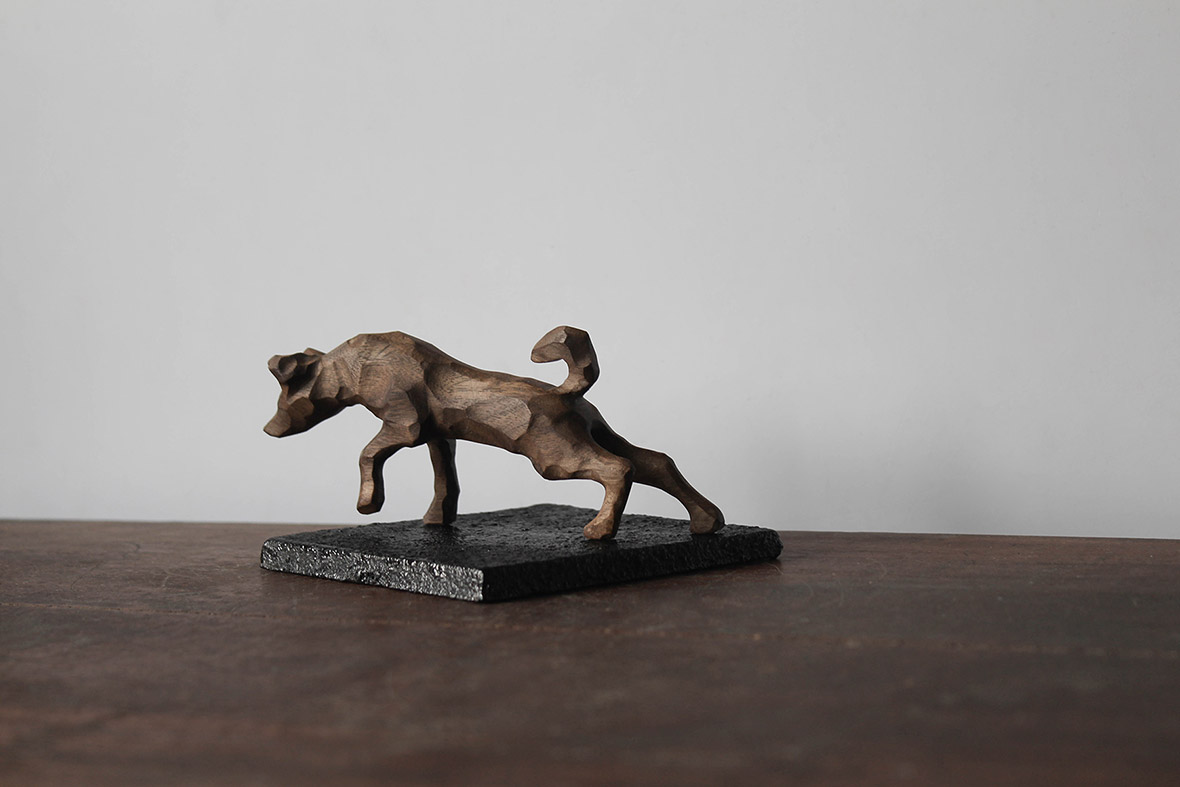
Neocha: Can you describe your typical day for us? How much of your day is spent working?
Guaishou: I am only focused on woodworking nowadays. My average day begins with me going to the studio at around 8 a.m. and working until 11 a.m. I’ll then go home for lunch and resume working at 1 p.m. until 5:30 p.m. My work day is usually about seven to eight hours long. But if there’s work I didn’t finish in the day, I will stay in the studio until it’s finished. For all my pieces, I always hope to finish in one day and not drag it out to the next day. Then later at night, I like to read and think about potential ideas for new creations.
Neocha: 你现在每天的生活 / 工作状态是什么样的?
怪兽: 我现在就只专注木作这件事。平时每天大概8点多去工作室,工作到11点多,回家吃午饭,下午1点钟再开始工作,到5点半。通常每天7-8个小时左右的工作时间。如果有白天没做完的工作,我就会在工作室继续完成它。在创作上,我总是希望一天的事情可以一天做完,不想拖到第二天。到了晚上,就看书看资料,构思一些新的东西。
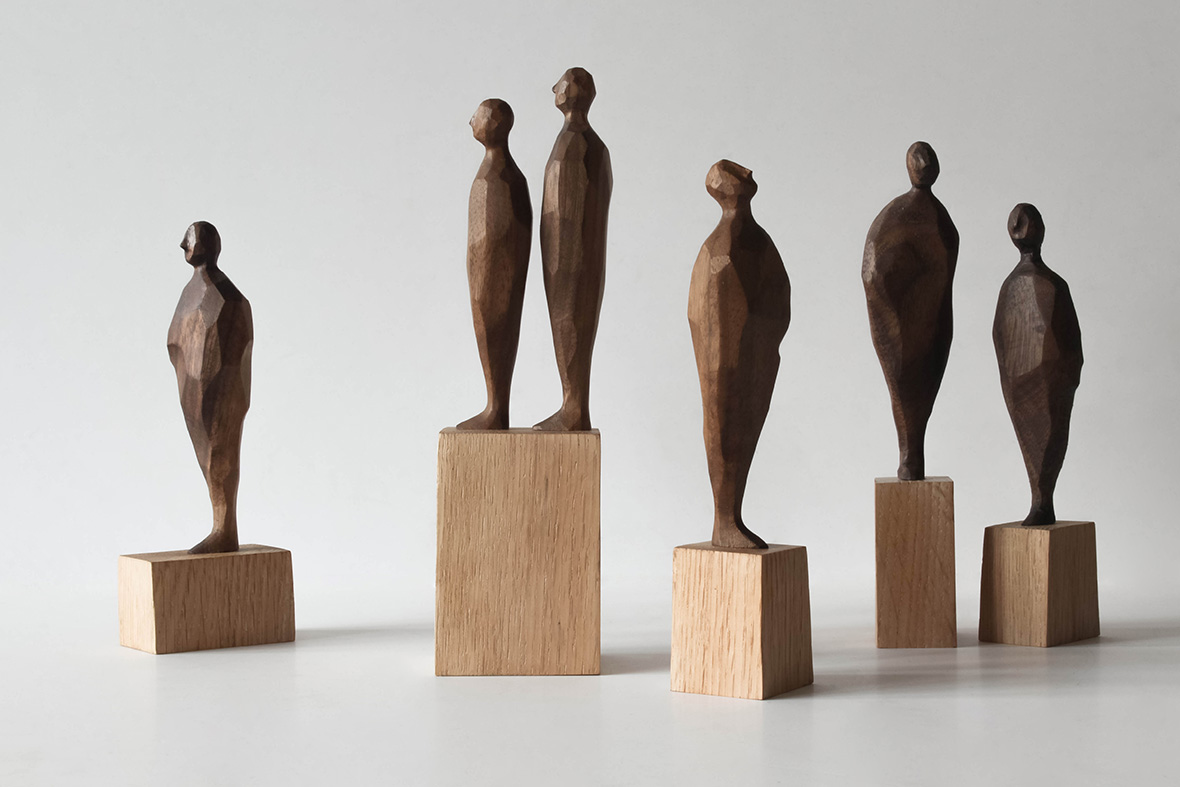
Neocha: Having worked with wood for three years now, do you feel like there’s a common subject that you find yourself gravitating towards? Why is that?
Guaishou: My favorite subject is humans. I enjoy finding different ways to present the human form. The entire body, only revealing half of a body, experimenting with different techniques, and so on. My creations tend to only have two eyes and a nose, and they’re typically genderless individuals. I tend to incorporate symbolism in all of my work related to humans, but the use of symbolism is quite common in my work. When people look at artwork that’s presented like a human, they’ll often see their own likeness in the work. Different people will extract different meanings from the artwork. Portraits will resonate with more people; this is why they they’re so appealing to me.
Neocha: 创作这么久以来, 你有没有特别专注的某一个主题?为什么?
怪兽: 我最喜欢创作的是人,用不同方式去表现人,全身的,半身的,各种不同制作手法……我创作的人,脸上最多只有两只眼睛一个鼻子,没有明显的性别倾向。我希望做出来的人都是具有符号性——这个是我作品里很统一的一点。人看人像作品时,常常会往自己身上靠,不同的人有不同的理解,但人像的确可以让更多的人产生共鸣,这就是我喜欢的理由。
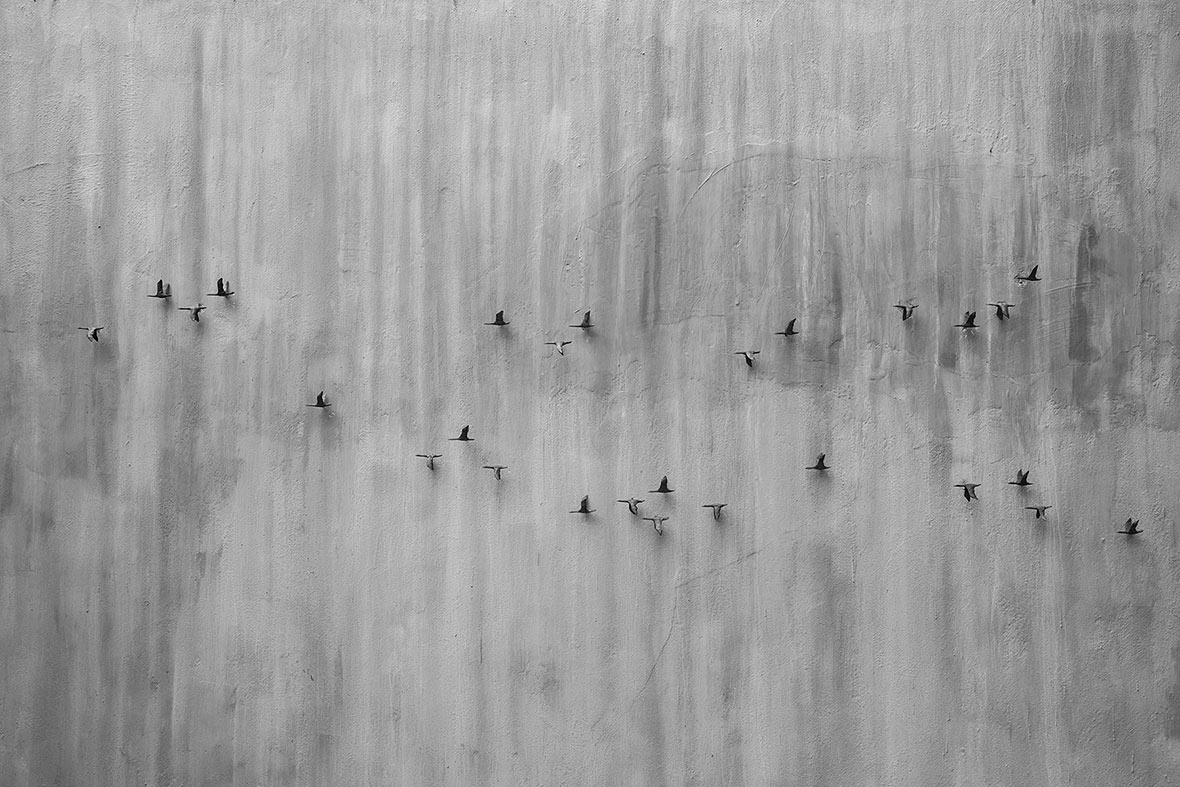
Last month, the Weizaiweizai art gallery in Shanghai held a solo exhibition of Guaishou’s work. This small art gallery hidden away on Anfu Road had to end the exhibition prematurely because nearly all of Guaishou’s work sold out faster than anticipated. Guaishou is already preparing for his next exhibition that’s planned for early next year. So be sure to keep your eyes peeled!
在刚刚过去的五月,上海的画廊“未在 味在”举办了怪兽的个人作品展。尽管安福路上的这个画廊连极为低调、颇为难找,这次展览仍然因为展品几近售罄,不得不提前闭幕。现在的他已经开始为明年年初的展览创作新的一批作品,令人不禁好奇和期待!

